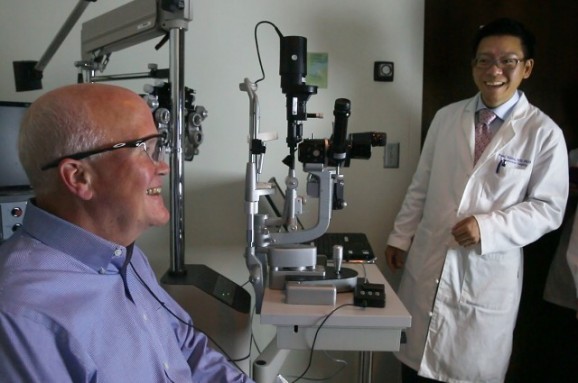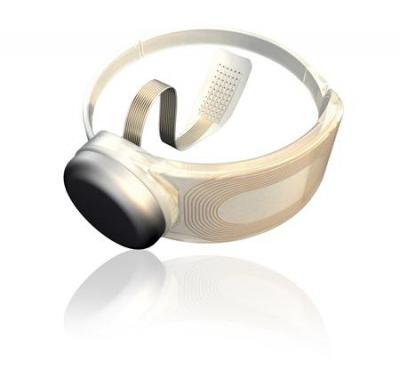Bionic Eye Helps A Blind Man See For The First Time In 30 Years
This article is more than 2 years old
 We’ve got implants that allow people born deaf to hear, 3D printed organs, and kick-ass prosthetics, so it’s probably no surprise that bionic eyes have joined the ranks. While these first models are fairly rudimentary, generally allowing wearers to distinguish only between light and dark, now that this first step is achieved, they are poised to improve rapidly, granting sight to people who have lived without for years.
We’ve got implants that allow people born deaf to hear, 3D printed organs, and kick-ass prosthetics, so it’s probably no surprise that bionic eyes have joined the ranks. While these first models are fairly rudimentary, generally allowing wearers to distinguish only between light and dark, now that this first step is achieved, they are poised to improve rapidly, granting sight to people who have lived without for years.
One of the first recipients of bionic eyes is Larry Hester, who in the video below gets his first glimpse at light in over 30 years. He’s understandably psyched to be able to discern the bright flashes of the light board. And now he can enjoy all the raves. The bionic eye is similar to a cochlear implant. Hester underwent a surgery to implant an electronic stimulator in his left retina. Then, when he wants to see, he puts on a glasses headset (don’t worry, it’s not nearly as douchey as Google Glass) whose camera detects light in front of it and converts it into an electrical signal. The retinal implant receives those signals, and then uses 60 electrodes attached to the optic nerve to transmit those images to the brain.
 The device itself, the Argus II Retinal Prosthesis Device was developed by researchers at Duke Eye Center and is manufactured by Second Sight. After 30 successful trials, the FDA approved it last year. This particular device is specifically developed for patients with retinal degeneration, a common form of which, retinitis pigmentosa, is what caused Hester’s blindness. It affects an estimated 1.5 million people around the world, and results in the loss of photoreceptor cells over time, which first affects peripheral and night vision, and can lead to partial or total blindness. Up until now, retinal conditions haven’t been treatable. Other bionic eyes are currently in development to treat people with other causes of blindness, such as macular degeneration.
The device itself, the Argus II Retinal Prosthesis Device was developed by researchers at Duke Eye Center and is manufactured by Second Sight. After 30 successful trials, the FDA approved it last year. This particular device is specifically developed for patients with retinal degeneration, a common form of which, retinitis pigmentosa, is what caused Hester’s blindness. It affects an estimated 1.5 million people around the world, and results in the loss of photoreceptor cells over time, which first affects peripheral and night vision, and can lead to partial or total blindness. Up until now, retinal conditions haven’t been treatable. Other bionic eyes are currently in development to treat people with other causes of blindness, such as macular degeneration.
In trials, the Angus II was able to elevate the eyesight of blind subjects to 20/1620, which is still considered legally blind (normal vision is 20/20, which means one can see what the average person sees from 20 feet away). Still, the first cochlear implants and bionic ears were similarly basic and have improved significantly in a relatively short amount of time. I think it is safe to assume we can expect a similar trajectory from bionic eyes. Let’s see how long it takes us to get X-ray vision.












